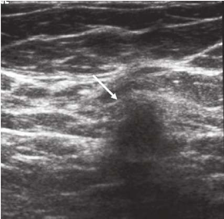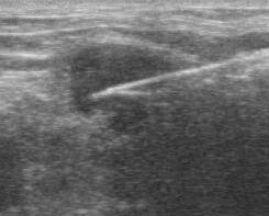Questions for your Breast Surgeon or Radiologist:
- What is the best type of biopsy for me?
- Can I avoid an open surgical breast biopsy?
- Can we avoid surgery if my needle biopsy does not show cancer?
- Will you personally call me with my biopsy results?
- May I have a copy of my “Pathology Report?”
What is a breast biopsy?
When a concerning mass or lump is identified in the breast, a biopsy is needed to determine the cause of the mass. A biopsy is a procedure to sample the concerning mass. A pathologist then evaluates the biopsy sample under a microscope to determine if any cancer or precancerous cells are present. Most biopsies are performed with a “core needle device” under local anesthesia (so called “minimally invasive breast biopsy”). Some are performed in the operating room through an incision under general anesthesia (open surgical biopsy). Nearly 80% of all breast biopsies will not be cancerous.
Why is a “Needle Biopsy” better?
Most biopsies can be accurately performed by guiding a small sampling needle into the concerning area using local anesthesia. This is best performed with imaging (Ultrasound/Mammography/MRI) to make sure the correct area is biopsied. Minimally invasive needle breast biopsies are considered “The Standard of Care.” An image-guided breast biopsy is not feasible in about 5 to 10% of breast abnormalities. A surgical biopsy should be used only as a last resort. Always insist upon a minimally invasive needle biopsy. If it is not offered, make sure it is clearly explained to you why a surgical procedure is recommended by your breast surgeon.
This minimally invasive approach to suspicious breast lesions has become commonplace over the last 10 – 15 years. There are numerous advantages associated with being diagnosed by a needle biopsy. This minimally invasive approach to breast biopsies is advocated by nearly all professional societies and patient advocacy groups.
Ask your “biopsy doctor” to call you ASAP with results
On the day of your biopsy, ask the radiologist or surgeon to call you directly with the result within the next 2 to 3 days. Write your contact information down for them and give them permission to leave the results as a voicemail. That way you can quickly learn the results (most are not cancerous) and get some guidance as to your next step. Too often, the results are delayed and you only hear from a staff member who will not be able to interpret the results. Interpreting your results is a critical quality aspect of every breast biopsy.
Get a copy of your pathology report
Make sure you get a copy of your biopsy “Pathology Report” from the ordering physician once it is available about a week later. Even when the results are “benign” it is helpful to have this information for future reference. Learn more with our video lesson on “Pathology Reports” (here).
“Ultrasound Guided” needle breast biopsy
Ultrasound guided biopsies allow your breast surgeon or radiologist to guide a sampling needle into the suspicious breast lesion and obtain slivers of tissue from this area. It is highly accurate if performed with experience and good judgment. This procedure is performed with local anesthesia and is well tolerated. It is by far the most common type of minimally invasive breast biopsy performed today.
ULTRASOUND NEEDLE BIOPSY OF A BREAST LESION
“Stereotactic” breast biopsy
This minimally invasive procedure is performed with a sophisticated biopsy device that uses small mammogram images to locate and guide a biopsy needle to the breast lesion. This procedure should be used to obtain breast tissue samples from a suspicious area detected only by mammography. It is also performed using local anesthesia.
“MRI guided” breast biopsy
This biopsy procedure is very similar to a stereotactic breast biopsy, but is usually performed for suspicious areas that are best seen on a breast MRI. It is also done under local anesthesia, but is more involved because of the MRI imaging needed to guide the biopsy needle to the area to be biopsied in the breast.
Patient-Friendly References:
This page (here) “Minimally Invasive Breast Biopsy” is an excellent overview of minimally invasive breast biopsy procedures. This site was created for patients by the American Society of Breast Surgeons.
- breastsurgeons.org
This “Consensus Statement” (here) on minimally invasive breast biopsies outlines in detail the advantages of this approach over open surgical biopsies. The American Society of Breast Surgeons is an organization dedicated to improving breast cancer care.





